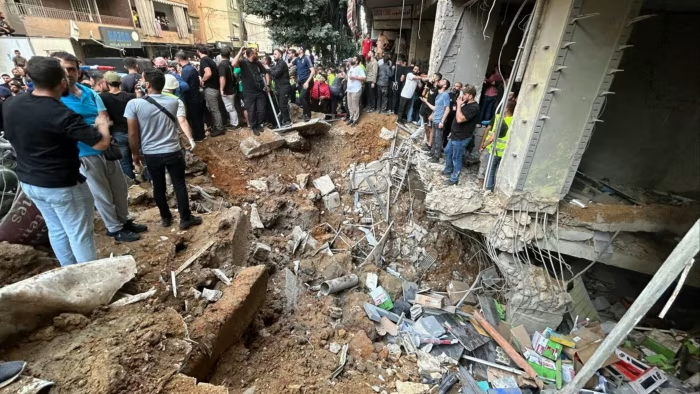A Resurgence of Clashes and Civilian Casualties Marks a Dark Turn in the West Bank; Ambulance Driver Killed During Settler Raid Deepens Crisis
In the grim arithmetic of the Israeli-Palestinian conflict, another life has been subtracted amidst a resurgence of violence sweeping through the West Bank. In an incident that has enkindled fresh anguish, a Palestinian ambulance driver was fatally shot while performing the sacred duty of saving lives. Palestinian authorities reported the tragic event on Saturday, amidst a broader canvas of unrest in the territory. As the West Bank reels under the weight of renewed strife and Gaza continues to nurse the wounds of ongoing conflict, such incidents are stark reminders of the ever-present shadow of violence in the region.
In the southern outskirts of Nablus, near the village of Al-Sawiya, an ambulance pierced the cacophony of discord as its driver, a 50-year-old Palestinian, sought to ferry the wounded to safety. His mission of mercy was brutally cut short by gunfire, which the Palestinian health ministry attributes to Israeli sources. The precise identity of the shooter, whether settler or soldier, remains enshrouded in uncertainty, and the Israeli military had yet to furnish a comment on the matter at the time of this report.
The reverberations of this incident are compounded by its occurrence during what appears to have been an egregious attack by violent Jewish settlers. Such confrontations are not isolated events but are emblematic of the deep-seated rifts and provocative encounters that mar the fabric of peace in the occupied territories. They contribute to a perpetuity of mistrust and retribution that has plagued the generations caught in the maelstrom of the Middle East dispute.
This fresh outbreak of hostility does not stand solitary in its severity. Earlier the same day, heightened tensions claimed the lives of at least two other Palestinians in the vicinity of Nur Shams, near the city of Tulkarm. Here, amid an Israeli raid, a 16-year-old boy and a gunman found their fates irrevocably sealed, becoming the latest entries in a long and sorrowful register of mortalities.
The surge in confrontations and the attendant toll on human life underscore a stark deterioration of an already frail security landscape. As Palestinians bear the funereal burden and Israelis bolster defensive postures, the quest for a durable resolution remains elusive, lost amidst the clatter of arms and the clamor of opposing narratives.
The Horror
The killing of the ambulance driver, in particular, reverberates with poignancy and horror, starkly illuminating the perilous terrain traversed by those dedicated to aiding the casualties of conflict. His death constitutes a dire breach of the Geneva Conventions, which sanctify medical personnel and their vehicles as neutral agents in warfare. The violation of this principle bellows a disturbing message about the sanctity of humanitarian law in the theater of the Israeli-Palestinian conflict.
In the wake of this dire incident, there looms a multitude of questions and few answers. The internal logic of violence provides no justification that could mitigate the severity of taking one who was committed to the preservation of life. Neither the silence of the military on the matter nor the cries of bereaved families fill the vacuum left behind by lives wrenched away by the indiscriminate cruelty of conflict.
The tableau of violence arraying the West Bank is a microcosm reflective of larger tribulations plaguing the Israeli-Palestinian narrative—a story where each act of aggression and retaliation scribes deeper furrows of division and hardens the stance of those who, though proximate in geography, remain distant in dreams of peace and cohabitation.
For the citizens of Gaza, the smoldering devastation is but another iteration of the seemingly endless cycle of bloodshed. With international diplomacy operating at a beleaguered pace against the quicksilver movement of war, the path to reconciliation, to understanding, seems as besieged as the communities dotting the Gaza Strip and West Bank.
In due reflection, the international response to this latest killing and the broader agitation in the West Bank and Gaza will serve as a barometer of the world’s true commitment to mediating peace and justice in the region. How the global community, Israel, and Palestinian leadership navigate this latest convulsion of violence will either arrest the further disintegration of order or, tragically, contribute to a future inscribed with more grief, more loss, and a legacy defined by squandered opportunities for peace.








